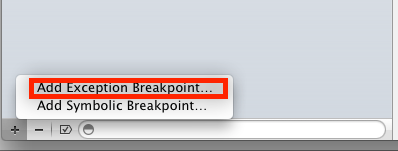cocos2dx-2.1.4 例程学习1 HelloCpp
1. Java 入口 HelloCpp.java HelloCpp类很简单,因为它继承的父类 Cocos2dxActivity 揽下了所有的内部操作,并建立了和JNI各类接口的关系,显示的工作也是通过 Cocos2dxActivity 的OnCreate函数来完成的。具体可以参考其实现。
System.loadLibrary("hellocpp");这句将载入项目内的 JNI 库,执行 JNI 中 JNI_OnLoad 函数接口。
[java]
import org.cocos2dx.lib.Cocos2dxActivity;
import android.os.Bundle;
public class HelloCpp extends Cocos2dxActivity{
protected void onCreate(Bundle savedInstanceState){
super.onCreate(savedInstanceState);
}
static {
System.loadLibrary("hellocpp");
}
}
除了上述所述功能,如果你发布的应用是收费的,那在这个类型中还需要添加验证过程,具体请参考 Android 开发文档。
2. JNI 入口 main.cpp
main.cpp 路径是 jni/hellocpp/main.cpp,载入库时刻,JNI_OnLoad 将被调用 ,它做的很重要的事情就是保存javaVM值,通过这个值你可以在JNI空间任何地方去的有效的JNIEnv环境变量 。相反,试图保存 JNIEnv在未来调用的做法是危险的。
[cpp]
jint JNI_OnLoad(JavaVM *vm, void *reserved)
{
JniHelper::setJavaVM(vm);
return JNI_VERSION_1_4;
}
另一件必须完成的工作就是实现虚函数 Java_org_cocos2dx_lib_Cocos2dxRenderer_nativeInit,显然 上节提到的 Cocos2dxActivity 将会调用这个函数。
[cpp]
void Java_org_cocos2dx_lib_Cocos2dxRenderer_nativeInit(JNIEnv* env, jobject thiz, jint w, jint h)
{
if (!CCDirector::sharedDirector()->getOpenGLView())
{
CCEGLView *view = CCEGLView::sharedOpenGLView();
view->setFrameSize(w, h);
AppDelegate *pAppDelegate = new AppDelegate();
CCApplication::sharedApplication()->run();
}
}
函数先检查 OpenGL View 是否可以正常获得,对于 Android API版本较低的手机这个函数可能无法通过,这时,在模拟器上看到的是黑屏。你可以自己修改来是上层显示一点提示,免得用户以为是程序有问题。
下面就是最重要的事情,创建自己的应用代表(Application Delegate)实例。这个实例中你需要做的就是实现初始化,消息响应函数等接口。CCApplication::sharedApplication()->run();会帮你让程序运转起来。CCApplication 这个类很简单,也有些诡异,它继承的 CCApplicationProtocol 类型就是一个纯虚的接口定义,这个父类是为跨平台设计的。CCApplication 中有一个静态函数 sharedApplication(),始终返回最近一次创建该类型对象的 this指针。这意味着 cocos2dx 在创建完这个对象后就想把这个对象的指针交给开发者,再由开发者调用 run成员函数来运转程序。
[cpp]
int CCApplication::run()
{
// Initialize instance and cocos2d.
if (! applicationDidFinishLaunching())
{
return 0;
}
return -1;
}
你有理由相信你获得的这个指针实际上指向了一个 CCApplication 子类,它来完成实际的消息处理循环过程。
好了,下面来研究 AppDelegate 类型。
3. AppDelegate 类型
AppDelegate 类型在 jni/Classes/AppDelegate.h 中定义,在 jni/Classes/AppDelegate.cpp 中实现。先看下面的定义,发现原来上节的 CCApplication 在这里果然变成了AppDelegate 的父类。你需要实现 applicationDidFinishLaunching 等 3个接口函数。上节中run函数中的调用关系问题到这里迎刃而解。(我想cocos2dx是否可以象 MFC 接口那样完成的更优美一些,将接口的调用过程完全隐藏起来。)
[cpp]
class AppDelegate : private cocos2d::CCApplication
{
public:
AppDelegate();
virtual ~AppDelegate();
/**
@brief 实现 CCDirector 和 CCScene 初始化代码
@return true 初始化成功, app 继续.
@return false 初始化失败, app 终止.
*/
virtual bool applicationDidFinishLaunching();
/**
@brief 当应用进入后台执行该函数
@param the pointer of the application ?? 我怎么没看到参数
*/
virtual void applicationDidEnterBackground();
/**
@brief 当应用即将进入后台执行该函数
@param the pointer of the application
*/
virtual void applicationWillEnterForeground();
};
AppDelegate的接口函数实现就像一个模版,在建立自己的应用时,你完全可以拿来主义。
[cpp]
bool AppDelegate::applicationDidFinishLaunching() {
// initialize director
CCDirector* pDirector = CCDirector::sharedDirector();
CCEGLView* pEGLView = CCEGLView::sharedOpenGLView();
pDirector->setOpenGLView(pEGLView);
// Set the design resolution
pEGLView->setDesignResolutionSize(designResolutionSize.width, designResolutionSize.height, kResolutionNoBorder);
CCSize frameSize = pEGLView->getFrameSize();
vector<string> searchPath;
// In this demo, we select resource according to the frame's height.
// If the resource size is different from design resolution size, you need to set contentScaleFactor.
// We use the ratio of resource's height to the height of design resolution,
// this can make sure that the resource's height could fit for the height of design resolution.
// if the frame's height is larger than the height of medium resource size, select large resource.
if (frameSize.height > mediumResource.size.height)
{
searchPath.push_back(largeResource.directory);
pDirector->setContentScaleFactor(MIN(largeResource.size.height/designResolutionSize.height, largeResource.size.width/designResolutionSize.width));
}
// if the frame's height is larger than the height of small resource size
补充:移动开发 , 其他 ,- 更多wap疑问解答:
- 新人求助QPainter
- 为什么程序都退出了还可以收到推送?如果大多设备都可以推送那运营商怎么办?
- qt 4.7 sqlserver2000 存储过程调用
- 关于ANDROID4.0.1编译问题!
- Android FrameBuffer读屏幕30秒后mmap失败
- 联通粗定位用java程序如何来请求和接受数据
- 为什么QT运行Android平台的程序时,mouseMoveEvent事件响应的间隔时间很长??????????
- android与PC蓝牙通讯
- 指定大小的label 内容可变,如果内容超出label的宽度,将未能显示的部分显示在另一个label上
- Android调试
- android如何通过wifi连接无线打印机
- 运行程序,release目录下产生一个乱码文件夹
- 分享个某机构最新安卓资料,自己验证了
- service启动不起来,掉不了service connection
- 求助:QT5.0 没有QPrinter吗




